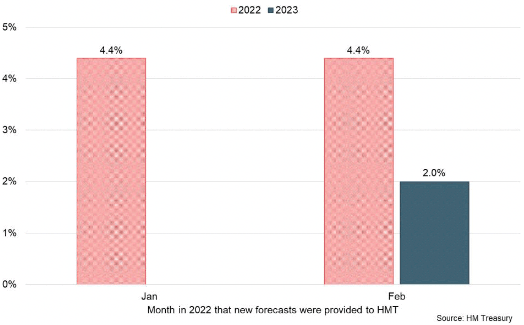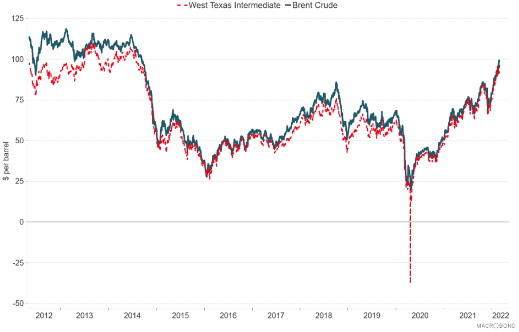Monthly economic brief: February 2022
The monthly economic brief provides a summary of latest key economic statistics, forecasts and analysis on the Scottish economy.
This document is part of a collection
GDP growth outlook
Scottish GDP growth is forecast to moderate in 2022 as the economy continues to stabilise while cost of living pressures are expected to intensify. The current geopolitical situation means that the global economic outlook is increasingly uncertain.
- The latest outturn GDP data initially estimates that the Scottish economy grew 7% in 2021, having fallen 10% in 2020. The most recent Scottish Fiscal Commission (SFC) forecasts from December 2021 (prior to the latest outturn data) expect further growth in 2022 and 2023, though at a more moderate pace of 3.8% and 1.3% respectively as the economy continues to stabilise following the pandemic shocks in 2020 and 2021. The Fraser of Allander Institute Q4 2021 Economic Commentary also forecasts the pace of growth to moderate in 2022 to 4.7%.[27],[28]
- Since the forecasts were undertaken, public health restrictions have also changed in Scotland and across the UK during December and January and as such are yet to reflect both the outturn data and the full short and medium term impacts of the Omicron wave on the Scottish economic outlook.
- At a UK level, UK GDP is estimated to have grown 7.5% in 2021 following a 9.4% fall in 2020. The average of new independent forecasts in February (published monthly by HMT) forecast UK GDP growth to moderate to 4.4% in 2022 and 2% in 2023.[29]

- In January 2022, the IMF revised down its UK GDP growth forecast for 2022 to 4.7%, from 5% in October, reflecting the impacts of Omicron on economic activity and ongoing supply constraints in the labour and energy markets. Growth is forecast to ease further to 2.3% in 2023.[30]
- This is part of a general downward revision to forecasts for 2022 across countries with the IMF forecasting global growth of 4.4% in 2022, down from 4.9% forecast in October. This reflects the disruption to the global economy from the spread of the Omicron variant and the reintroduction of restrictions at the start of the year, combined with the persistence of supply disruptions and inflationary pressures.
- Since then, the current geopolitical situation means that the global economic outlook is increasingly uncertain, with financial markets likely to be disturbed, growth potentially weaker and with the prospect of higher inflation as energy and commodity prices rise further.

- The most immediate global economic effects are likely to be felt through higher inflationary pressures as a result of higher prices for oil, gas and other commodities. On the back of price rises over the past year, oil prices have risen further and are trading above $100 per barrel. However wider global economic implications for supply chains, trade and growth are yet to fully emerge as the situation evolves.
Contact
Email: OCEABusiness@gov.scot
There is a problem
Thanks for your feedback